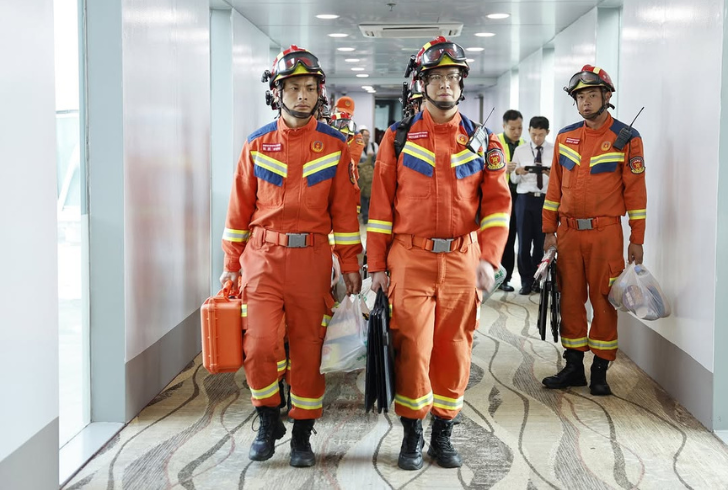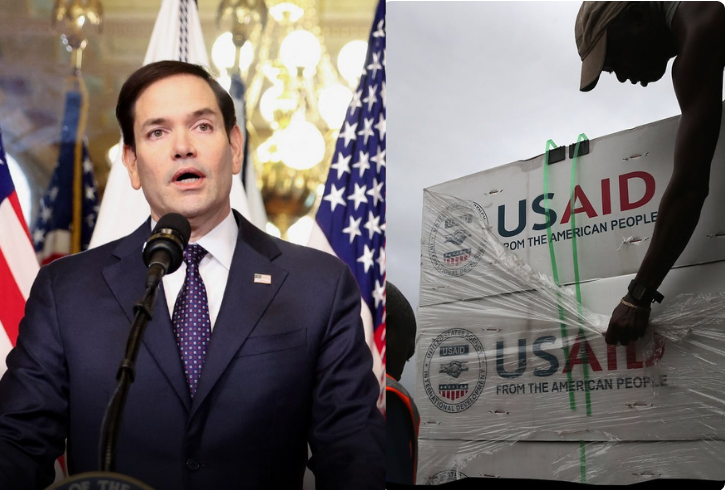Myanmar is reeling from a catastrophic 7.7-magnitude earthquake that struck its central region, leaving over 1,700 people dead. While nations like China, Russia, India, and Thailand have deployed emergency teams and humanitarian aid, the United States has yet to make a significant impact.
The delay in the U.S. response is linked to recent funding cuts and restructuring within the U.S. Agency for International Development (USAID), raising concerns about the country’s diminishing role in global disaster relief.
International Aid Arrives Quickly
China took immediate action, dispatching 126 rescue workers, six trained search dogs, drones, and medical supplies. It has also pledged $14 million for relief efforts. Russia, Malaysia, and Vietnam have followed suit, ensuring that emergency response teams reach the hardest-hit areas, including Mandalay.

In contrast, the U.S. has committed $2 million in aid but has yet to deploy search-and-rescue teams. Michael Schiffer, a former USAID official, emphasized the strategic importance of humanitarian assistance.
“Providing aid is not just about relief; it also reinforces America’s global influence. When the U.S. is absent, and others step in, it sends a clear message about shifting power dynamics,” he said.
The Impact of USAID Budget Cuts
The sluggish U.S. response is partly due to widespread layoffs at USAID. On the same day the earthquake struck Myanmar, USAID personnel in Washington received termination notices. Many of these professionals had been working on disaster response coordination in Asia.
Two key USAID humanitarian assistance positions in Yangon and Bangkok, which would have facilitated rapid relief efforts, were also eliminated. This restructuring has left the agency understaffed and unable to mobilize resources as efficiently as in previous crises.
Essential supplies like medical kits—capable of serving 30,000 people for three months—are stocked in warehouses in Dubai and Malaysia. However, getting them into Myanmar requires logistics support that has been weakened by recent budget cuts. Additionally, search-and-rescue teams in Virginia and California, typically deployed for international disasters, remain grounded due to funding issues.
Challenges in Delivering Aid
Even before the earthquake, Myanmar had been grappling with political instability. Since the military takeover in 2021, the country has become increasingly isolated from Western nations. The junta’s human rights violations have led to sanctions from the U.S. and other countries, further complicating relief efforts.
Despite its strained relations with Western governments, Myanmar’s military leader, Senior General Min Aung Hlaing, has stated that international aid is welcome. However, concerns remain about whether assistance delivered through the government will reach those in need or be diverted for military use.
In Mandalay, where destruction is severe, frustration is mounting. Witnesses report that soldiers are present at disaster sites but are not actively participating in rescue operations. “People are using their bare hands to pull victims from the rubble while soldiers stand by, playing on their phones,” said a local resident.
Future of U.S. Humanitarian Efforts

With USAID’s annual funding for Myanmar drastically reduced, long-term relief and development programs are also at risk. In 2024, the agency allocated $320 million to the country, with over half directed toward humanitarian aid. Many of these programs have now been discontinued or remain unfunded.
At a recent press conference, Secretary of State Marco Rubio acknowledged that U.S. foreign aid would continue, but in a more “strategically aligned” manner. The statement suggests a shift toward funding initiatives that directly align with U.S. geopolitical interests rather than broad humanitarian assistance.
Uncertainty for Myanmar’s Survivors
For many in Myanmar, the earthquake is just another chapter in an ongoing crisis. In the Sagaing region, where anti-junta resistance is strong, military airstrikes struck villages just hours after the earthquake hit. “It feels like we’re fighting for survival on multiple fronts—if not from natural disasters, then from the military,” said a local resident.
Despite the political and logistical challenges, humanitarian organizations on the ground continue to provide support. However, with the U.S. scaling back its role, the responsibility of aiding Myanmar’s earthquake survivors is increasingly falling on other global powers.
